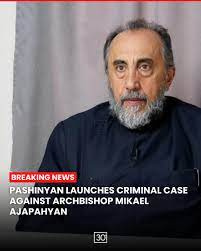Imprisoned Archbishop Mikael Ajapahyan compared his trial to the Stalin-era execution of Bishop Artak Smbatyants

301
“Your records list my address on Bishop Smbatyants Street. He was the first head of the Shirak Diocese, executed in 1937. His killers are forgotten, but a street bears his name. One day—if not today, then in ten years—I will be justified. But you will remain guilty. Your children will be ashamed,” Ajapahyan declared.
Ajapahyan, who currently leads the Shirak Diocese, is under arrest on fabricated charges of “calling for the seizure of power.” His supporters describe the case as politically motivated. Hearings have proceeded at an “inexplicably” rapid pace, and judges and prosecutors have been criticized for carrying forward what is widely considered a falsified case.
The Smbatyants reference underscores the historical parallel. Soviet agents executed him without trial in 1937, branding him an “enemy.” His memory survived in Gyumri’s street name, while his executioners vanished from history.
Ajapahyan’s defense argues that his arrest is part of a campaign by Pashinyan and his inner circle to attack the Armenian Apostolic Church. Human rights groups call the trial political persecution disguised as legal procedure, raising questions about Armenia’s democratic standards.





